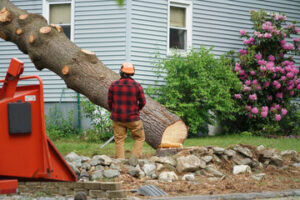When windows reach the end of their lifespan, they may need replacement. You’ll know when the time comes when window sashes or frames develop chipped paint or hardware problems that make opening and closing them difficult.

There are two kinds of replacement windows: full frame and insert. A full frame installation requires removing the exterior siding and trim, while insert windows fit into existing frames. Contact Window Replacement Ellicott City, MD for professional help.
When it comes to replacing your windows, the cost depends on a variety of factors. Those factors include the window’s frame material, style, glass and energy efficiency. You also need to consider other associated costs such as labor. Labor costs usually account for about 15% of the overall window replacement cost. Choosing the right time to replace your windows is important because it can help you save money. You should try to install your windows in the fall or winter when demand is lower than during other seasons. This will allow your pro to work faster and may cost less than if you install them in warmer months.
The number of windows that need to be replaced will also affect the cost. If you only need to replace one or two windows, the cost will be much lower than if you needed to replace several windows in your home. In addition, the type of window you choose will affect the cost. For example, double-pane windows will be more expensive than single-pane windows. Also, windows that require additional insulation or energy-efficient features will be more costly than standard windows.
If you want to save money on your window replacement project, you can install the windows yourself rather than hiring a professional. However, this is only a good idea if you have the proper tools and know-how to do the job correctly. Otherwise, you could end up lowering the energy efficiency of your home and paying more in utility bills.
It’s also a good idea to purchase your windows from a reputable company that offers a warranty in case any issues occur after the installation. This can save you a lot of money in the long run. It’s also a good idea to avoid companies that use high-pressure sales tactics to sell their products.
The best way to determine the costs of your window replacement project is to meet with a local contractor and get a quote. They will be able to help you find the best windows for your budget and needs. In addition, they can offer you tips on how to reduce the cost of your project.
Energy Efficiency
Energy efficient windows help lower home heating and cooling costs. They also help reduce drafts and improve comfort. Some window companies claim that homeowners can recoup the cost of installing new windows through energy savings alone. This is true to some extent, but it is important to understand the limitations of these claims.
The energy efficiency of your new windows depends on the frame material, glass type and other features. Choosing a high-quality ENERGY STAR(r)-certified window will cost more than an average or standard window, but it is worth the investment. In fact, ENERGY STAR windows reduce household energy bills by an average of 12% annually.
Window frames made of wood or vinyl are the most expensive while clad wood and fiberglass cost the least. Glass efficiency upgrades such as low-E coatings and argon gas fill increase the price of your window, but they can also reduce energy costs significantly.
Another way to increase the energy efficiency of your windows is to replace old sash components with modern, more efficient ones. This can be done with sash replacement kits or insert replacement windows. Unlike full-frame replacement windows, these do not require major framing work, so they can usually be installed in existing window openings by installation professionals.
Sash replacement kits are available for most standard window sizes and come in wood, vinyl and aluminum-clad wood. They consist of jamb liners fastened to the sides of the window frame, and sash that slide into them. The sash is often reinforced with aluminum to reduce drafts and enhance energy efficiency.
Installing a new window in your home can boost curb appeal, make the house more comfortable and improve its security. It can also add value and increase your return on investment when it comes time to sell. However, you must consider all the other options when deciding on the best window for your needs.
Window replacement is a major investment, so it’s important to compare the different brands and models before making a purchase. The best way to do this is to read reviews and look at the NFRC ratings for each product. Using this information can help you choose the right window for your needs and avoid paying extra for features that you may not use.
Appearance
In addition to energy efficiency, new windows can make a big impact on your home’s appearance. They can enhance your home’s curb appeal and help you achieve a specific design style. New windows also allow more natural light to enter your home, which can brighten up dark areas and reduce energy costs.
Oftentimes, the main reason homeowners opt to replace their existing windows is for aesthetic reasons. Older windows can be difficult to open and close, and may look worn or outdated. They can also impede airflow and cause drafts. Additionally, some older windows are painted with lead-based paint, which poses health risks if disturbed.
When deciding to replace your windows, it’s important to consider the material and configuration. There are many different window options available, including vinyl, aluminum, wood, and fiberglass. Each has its own benefits, so choosing the best option for your needs is crucial. It’s also important to consider the style of your home, as some styles may not match well with your current windows.
Visible damage and wear and tear are common indicators that it’s time to replace your windows. Wood frames are prone to rotting and warping, while aluminum and vinyl are susceptible to corrosion and discoloration. Additionally, if you notice a draft or condensation between the glass panes of double-pane windows, this is a sign that the seal has failed and is no longer providing effective insulation.
Another indicator that it’s time to replace your windows is if they are difficult to open and close. This can be caused by the natural settling of your home or by malfunctioning hardware. It’s important to note that if your windows are hard to open and close, it is not only inconvenient but can be a safety hazard in an emergency situation.
Maintenance
A window replacement can add a fresh look to your home and improve its appearance. Old windows tend to show signs of wear and tear, but regular maintenance can help them last longer and remain functional. Some of these repairs include sealing, re-caulking, replacing panes and sashes, and upgrading hardware. However, if the windows are severely damaged, it is more cost-effective to replace them.
Water infiltration: If you are noticing coffee-like stains around the windows, there may be water leaks. These are usually caused by worn or damaged seals that allow water to enter your home. You should contact your local Mr. Handyman of Anne Arundel and North PG technician to inspect the cause and make the necessary exterior repairs.
Unusual openings and closings: If your windows are difficult to open and close, it could be a sign that they need replacing. Newer windows are designed to operate more easily and can be opened to let in a breeze or as an emergency exit in the event of a fire.
Cracked or broken glass: A cracked or broken window is not just unsightly, but it can also be a safety hazard and an entry point for intruders. Depending on the location of the window, it is important to have it replaced as soon as possible to avoid further damage or injury.
Repairing leaking windows: If you notice that the window is leaking, there may be damage to the seals, or other parts of the frame. A leaky window can lead to costly damage to the structure of your home, so it is important to get it fixed as quickly as possible.
A broken sash spring: If the window jams, sticks, or is heavy to operate, there could be a problem with the sash spring. Repairing this can be expensive as the work is time consuming and requires specialist tools.
Replacing a lintel: Lintels are the beams that support the weight of the window and are typically made from wood or stone. If a lintel is rotting, has big cracks, or serious storm damage it will need to be replaced completely. This can be an expensive job, but it is vital for the structural integrity of your home and safety as the rotting lintel can fall through or break during a storm.



